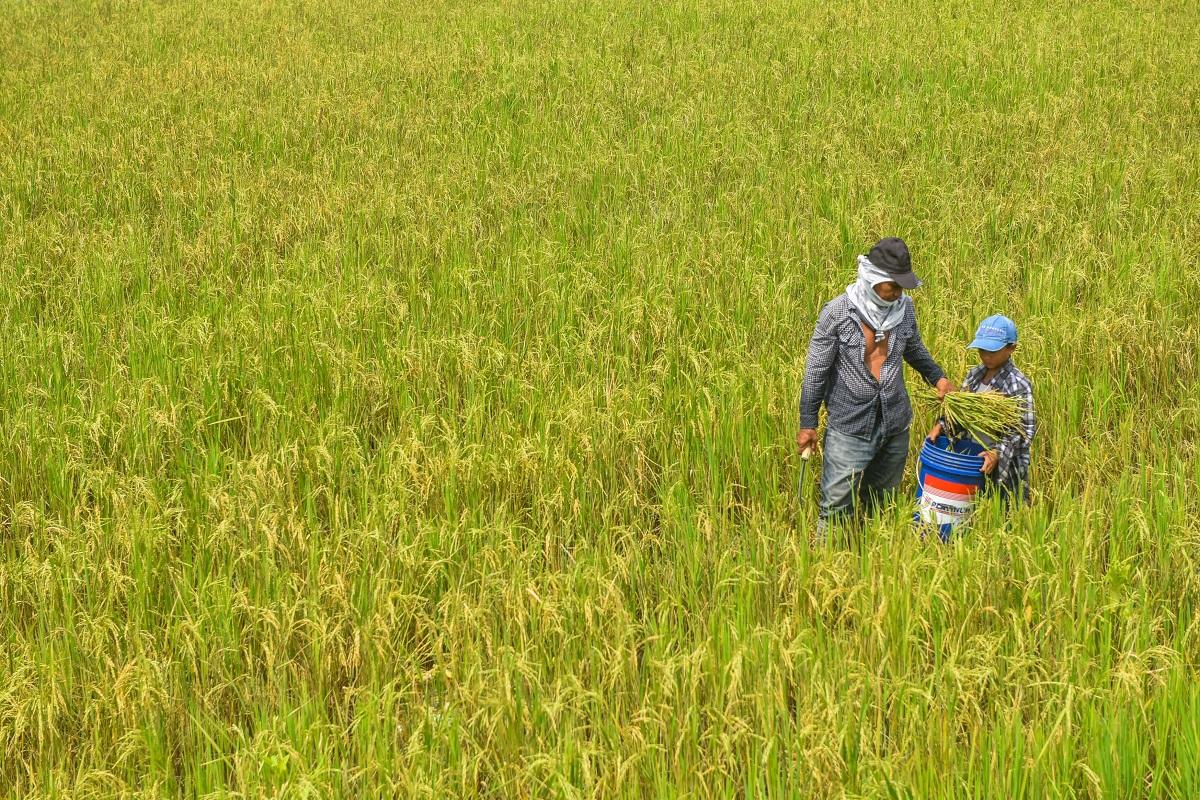Rice farmers’ fund use declining, data shows

The P10-billion-a-year Rice Competitiveness Enhancement Fund (RCEF) is meant to improve rice farmers’ competitiveness amid the liberalized rice trade policy due to the Rice Tariffication Law (RTL).
However, a declining budget utilization rate since 2021 is hounding the fund.
Data provided by the Department of Budget and Management (DBM) to GMA News Online showed that the RCEF’s utilization was at 36.54% in 2019.
The utilization rate increased to 86.45% in 2020, but declined to 80% in 2021 until it further slipped to 76.16% in 2022.
As of the first half of the year or June 30, 2023, the RCEF’s utilization rate stands at 28.98%.
“Out of P10 billion [for RCEF], about P3.726 billion has been utilized for 2023,” DBM Undersecretary Goddess Hope Libiran said.
RCEF is an annual appropriation of P10 billion provided under the RTL for six years starting from 2019. The fund will be used to provide farm machinery and equipment, credit assistance, seed development, and training to increase local rice farmers’ yield and competitiveness.
The RCEF is divided among four key programs: namely rice farm mechanization (P5 billion), seed propagation (P3 billion), rice credit assistance (P1 billion), and extension services (P1 billion).
In a separate statement, the Philippine Center for Postharvest Development and Mechanization (PhilMech) explained that the “low fund utilization” seen in the first three years of the RCEF “is due to the late downloading of funds in its first year of implementation in 2019.”
PhilMech is the implementing agency for the RCEF’s farm mechanization component. The program gets the bulk 50% or P5 billion of the annual P10 billion RCEF.
PhilMech also explained that the P5 billion fund for mechanization was given to the agency on December 28, 2019, which it said “created a domino effect as another P5 billion for 2020 was added without [yet fully] spending the first allocation.”
“In short, the budget got compounded. Likewise, the pandemic largely restricted immediate machine distribution and rapid disbursement of funds during the first half of project implementation,“ PhilMech said.
Nevertheless, the agency said that for the latter half of project implementation, its Bids and Awards Committee conducts the bidding process for the rapid deployment of machinery for the fourth quarter of this year which will result in a faster fund disbursement.
“The impact on yield is high but there is an overall low measure of budget utilization due to the bureaucratic nature of procurement and disbursement of machinery,” PhilMech said.
Data from the Department of Agriculture’s RCEF database showed that the fund has distributed 23,599 machines and equipment and facilitated its distribution to 8,199 farmers’ cooperatives and associations (FCAs) and local government units (LGUs) from 2019 to 2023.
For the seed program component, from 2020 to 2023, the DA has distributed 14.08 million bags of seeds, comprising 91% of its target.
A total of 556,000 farmers were served, accounting 52% of the 1.060 million target for the covered period.
For the credit assistance program, data showed a total of P3,021,305,604.70 loans have been extended to 184 cooperatives and 9,626 individual farmers as of June 30, 2022.
Broken down, the Land Bank of the Philippines released P1,588,080,735.70 credit assistance to 160 cooperatives and 9,610 individual farmers.
The Development Bank of the Philippines, meanwhile, released P1,433,224,869.00 to 24 cooperatives and 16 individual farmers.
For the Rice Extension Service Program or the extension component of the RCEF, as of July 2, 2023, a total of 10,272 various trainings with 199,046 participants have been conducted.
Since the RTL took effect in 2019, palay production has been consistently growing above 19 million metric tons (MT).
Data from the Philippine Rice Research Institute showed palay production stood at 18.81 million MT in 2019 and grew to 19.29 million MT in 2020.
It further grew to 19.96 million in 2021 until it moderated to 19.76 million MT in 2022.
Citing data from the Philippine Statistics Authority, the Presidential Communications Office said that palay output from January to June 2023 rose to nine million metric tons (MMT), from 8.7 MMT produced in the same period last year.
During the House Agriculture and Food Committee's hearing on the rice production and supply situation on Wednesday, Albay Representative Joye Salceda has suggested an early review of the programs under RTL since the six-year period for the mandatory review of the law takes place next year.”
Salceda also said that “the review is timely” and will push for the conduct of the review of RCEF programs by the Congressional Oversight Committee on Agricultural and Fisheries Modernization (COCAFM) earlier.
“Since there are obviously areas where we allocated more, such as machinery, but can be adjusted already given emerging needs,” the lawmaker said.
“The RCEF programs are very supply-side. So, we might even consider shifting the RCEF monies towards a price support for domestic rice produced. That way, the incentive is behavioral. If you produce more, we buy more from you,” Salceda said. — BM, GMA Integrated News




